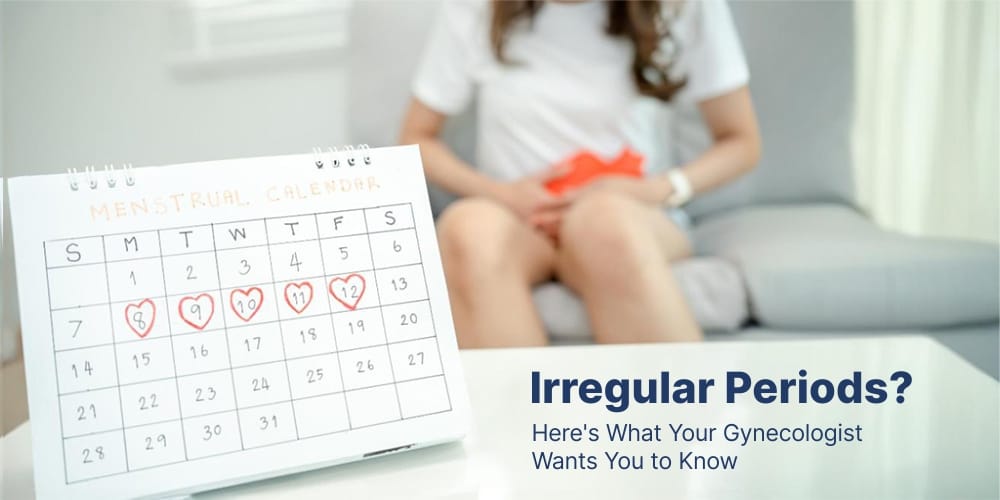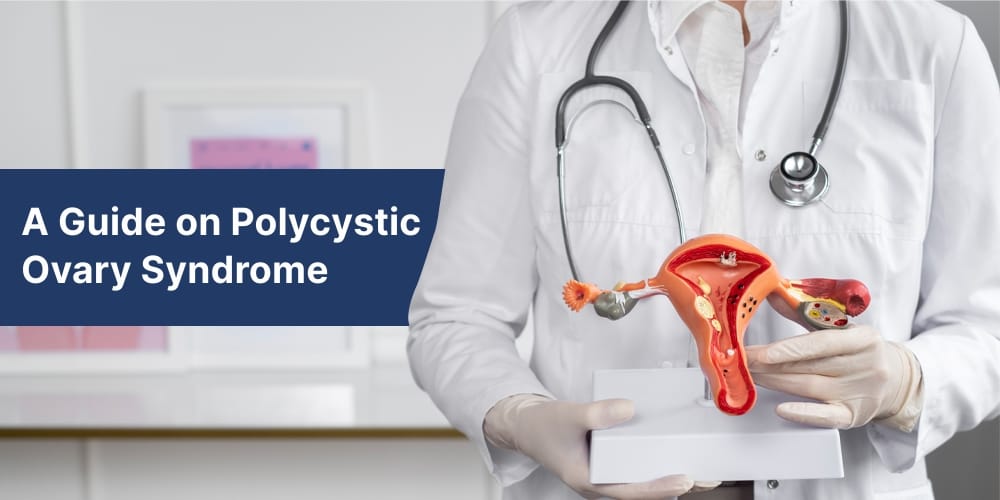Pelvic pain is a pain in the region between the hips and below the belly button that persists for six months or more and is referred to as chronic pelvic pain. Pelvic pain in women is a complicated problem that can be caused by many things, such as problems with the reproductive organs, the urinary tract, or the muscles and bones.
As Dr. Pankhuri Gautam, a dedicated obstetrician and gynecologist in Jaipur, I have spent the last ten years trying to understand and treat this complicated disease. I started my practice because I want to help women with pelvic pain by providing specialized care and support.
In this blog, I’ll discuss some of the most common causes of pelvic pain, such as problems with the gynecological, urinary, or stomach systems. I will also explain the signs so you know when to get help. Come with us as we discuss this critical issue and try to provide those affected with more information and assistance.
What Is Pelvic Pain?
Even though pelvic pain usually means pain in the area of a woman’s reproductive organs, it can happen to both men and women and for different reasons. If you have pelvic pain, it could mean you have an infection or be hurt in your pelvic bone or nonreproductive parts. For women, however, pelvic pain could mean that one of the reproductive organs in the pelvic area isn’t working right. These organs include the uterus, ovaries, fallopian tubes, cervix, and vagina.
What Causes Pelvic Pain?

Many conditions can cause pelvic pain in women, and each has its signs and ways to treat it. In most cases, pelvic pain is caused by the following:
Urinary tract infections (UTIs)
UTI stands for “urinary tract infection.” It is a bacteria-caused infection of the urinary tract, including the kidneys, ureters, bladder, and urethra. UTIs usually happen in the bladder and affect about half of all women at some point in their lives.
Most of the time, a UTI will cause pain in the pelvis. Most of the time, the pain is in the middle of the hip and near the pubic bone.
Menstrual cramps
Period cramps are a common reason for pelvic pain. More than half of women who have periods will feel pain for at least one to two days during each cycle. Usually, menstrual cramps happen right before a person’s period starts because the uterus tightens and the lining falls off. It might hurt like a muscle cramp or like a sharp pain.
Ovarian cysts
When the ovaries can’t release an egg, cysts form in them. The follicle that holds the egg might not open all the way or get filled with fluid. In this case, a growth called a cyst forms in the area. This growth may lead to pelvic pain, bloating, or pressure on the side of the body where the cyst is. While cysts are usually harmless, they can bleed or burst, which can be painful in the hip, and may need medical help. I use advanced imaging to find ovarian cysts and create individualized treatment plans that may include minimally invasive surgery if required.
Appendicitis
Appendicitis is swelling in the appendix, a small organ in the lower right part of the belly. It is a common disease caused by an infection that can be very bad. If you have sharp pain in the lower right part of your belly and other symptoms like fever and vomiting, you should see a doctor right away because this could be a sign of appendicitis.
Pelvic inflammatory disease (PID)
Pelvic inflammatory disease, or PID, is a medical condition in the reproductive system of women. It starts when germs enter the uterus and move to the ovaries, fallopian tubes, or other reproductive system parts. Most of the time, PID is caused by an STI, like gonorrhea or chlamydia. Along with pelvic pain, women may also have other symptoms, such as vaginal discharge and blood that isn’t normal.
Endometriosis
Endometriosis develops when tissue that resembles the endometrium, or tissue that lines the lining of the uterus, grows outside the womb. This can cause some women’s pelvic pain to last for a long time. When a person gets their period, hormones change the tissue outside the uterus. This can lead to bleeding and swelling in the hip.
I, Dr Pankhuri Gautam, am an expert in endometriosis and can help with pain through modern treatments like hormone therapy and laparoscopic surgery.
Intestinal disorders (such as diverticulitis or colitis)
Intestinal problems include conditions like diverticulitis and colitis, which cause inflammation in the digestive tract, resulting in bloating, discomfort, and pain. Since the digestive system and pelvic area are connected, this inflammation can spread to the pelvic region and cause severe pain.
Kidney stones
Minerals in urine, like calcium or uric acid, stick together and form hard rocks, resulting in kidney stones. People feel pain when they have a stone that is too big to pass through their ureters. When the ureter meets a stone, it may clamp down on it to push it out, which can also cause pain. It might lead to a painful cramp. If the stone gets in the way of urine flow, it can back up into the kidney and hurt a lot.
Bladder disorders
Bladder diseases include infections and interstitial cystitis, making it hard for the bladder to work. These can cause pelvic pain by putting pressure, pain, or inflammation on the bladder area, which can cause intermittent or constant pain.
Uterine fibroids
Fibroids in the uterus are growths in the uterus wall. They’re common when trying to have children, and most of the time, they’re not dangerous. They can be as small as seeds or as big as lumps that make your belly grow. Fibroids don’t always show any signs. But bigger fibroids may put pressure on or hurt the pelvis.
Nerve conditions (such as pinched nerves of your spine)
Nerve conditions like pinched nerves can cause pelvic pain by affecting the nerve pathways that run through the pelvis. It can make the pain in the pelvic area very sharp or last for a long time.
Pregnancy complications (such as ectopic pregnancy and miscarriage)
Pregnancy problems like ectopic pregnancy and miscarriage can cause a lot of pelvic pain that needs to be treated right away by a doctor.
In an ectopic pregnancy, a fertilized egg grows somewhere other than the uterus, generally in the fallopian tubes. The egg can grow big enough to burst the fallopian tube, which can be dangerous. This kind of pain comes on quickly and can feel like it’s cutting you. It might only be on one side of your pelvis.
Having a miscarriage means losing a baby before the 20th week of pregnancy. If you have bad cramps or pain in your belly, you may have had a miscarriage.
Hernia
A hernia develops when an organ or tissue pushes through a weak area in the muscles of your abdomen, chest, or thighs. It can lead to a painful or sore bulge. You can push the bulge back in, or it will go away when you lie down. Hernia pain worsens when you cough, laugh, bend over, or lift something.
Cervical Cancer
Cervical cancer starts in the cervix and can cause pelvic pain as it progresses. When tumors press on nerves or other structures in the pelvis, they can hurt the lower belly or feel uncomfortable.
Uterine Cancer
The word “uterine cancer” refers to any cancer in the uterus. It can lead to pelvic pain through tumor growth that exerts pressure on the pelvic area or by causing changes in the uterus that result in pain or discomfort.
Adenomyosis
It occurs when the tissue that lines the uterus grows into the muscular wall of the uterus—the extra pressure and inflammation in the uterus wall cause painful, heavy periods and long-lasting pelvic pain.
If you are facing any such symptoms, visit me in my clinic for an accurate diagnosis of adenomyosis. I will make a treatment plan just for you that will focus on relieving pain and managing your symptoms.
Ruptured fallopian tube
A ruptured fallopian tube, often due to an ectopic pregnancy, is a medical emergency where the tube tears, causing severe pelvic pain. This rupture causes internal bleeding and severe pain, so you need to see a doctor right away to avoid consequences that could be life-threatening.
Dr. Gautam highlights that, in addition to the previously mentioned conditions, other significant causes of pelvic pain should not be overlooked. Figuring out these different reasons is vital for diagnosing and treating pelvic pain.
Interstitial Cystitis
Interstitial Cystitis is a chronic condition causing bladder pressure, bladder pain, and sometimes pelvic pain. The discomfort can range from mild to severe and is due to inflammation of the bladder walls.
Mittelschmerz
Mittelschmerz is the pain that comes with ovulation, which happens in the middle of your period cycle. It can lead to sharp or dull pelvic pain on one side. The pain usually goes away quickly but can be very painful.
Twisted or Ruptured Ovarian Cyst
When an ovarian cyst twists (torsion) or ruptures, it can cause sudden, severe pelvic pain due to internal bleeding or irritation of the pelvic lining.
Past Physical or Sexual Abuse
Experiences of physical or sexual abuse can lead to chronic pelvic pain. This pain can be a complex mix of physical and psychological factors, happening long after the abuse has occurred.
Psychogenic Pain
Psychogenic pain is defined as pain that results from psychological reasons rather than physical causes. It might emerge as pelvic discomfort when stress, anxiety, or depression induce physical symptoms that cannot be attributed to a specific physical cause.
Vulvodynia
Vulvodynia is a disease where the vulva hurts all the time for no apparent reason. It can make a woman’s pelvic area burn, itch, or hurt very badly, which can have a significant effect on her quality of life.
Fibromyalgia
Fibromyalgia is a long-term illness that causes pain all over the body, including in the pelvic area. It’s believed to boost pain signals, which makes regular touch or pressure hurt.
Pelvic Floor Muscle Spasms
These spasms or movements of the muscles on the floor of the pelvis can lead to long-term pelvic pain. The pain may last long and worsen when you move or do certain things.
Inguinal Hernia
An inguinal hernia happens when tissue, like a part of the intestine, pushes through a weak spot in the abdominal muscles. It usually hurts in the groin area and may spread to the pelvic region.
What are the Symptoms of Pelvic Pain?
Many symptoms could mean that you have an underlying problem that is causing your pelvic pain. Knowing these symptoms is essential to get a diagnosis and treatment right away. Some of the symptoms are:
- Vaginal Bleeding, Spotting, or Discharge: Having unusual bleeding or discharge that usually doesn’t happen during your period can be a sign of several gynecological problems.
- Menstrual Pain: If you have severe cramps or pain during your period that is worse than usual, it could be a sign of endometriosis or fibroids.
- Dysuria (Painful Urination): Painful urination can be a sign of a urinary tract infection (UTI) or some other bladder issue, which can mean inflammation or an infection.
- Constipation or Diarrhea: If your bowel habits change or you feel pain, it could be a sign of gastrointestinal problems or pelvic floor dysfunction.
- Bloating or Gas: Constant bloating or gas can be a sign of stomach problems and severe pelvic conditions.
- Rectal Bleeding (Bleeding During Bowel Movements) is a sign that something is wrong with the digestive system and should be investigated, especially if it occurs along with pelvic pain.
- Pain During Sex: Endometriosis, ovarian cysts, and pelvic inflammatory disease can all cause pain or discomfort during sexual activity.
- Fever or Chills: Pelvic pain accompanied by fever or chills can be a sign of an infection needing immediate medical help.
- Hip Pain: Hip pain is often caused by problems with the muscles and bones, but issues with the pelvis can also cause it.
- Pain in Your Groin Area: Groin pain could be caused by several things, including hernias, infections, or other pelvic disorders.
Conclusion
Pelvic pain in women is a complicated condition that can have many causes, ranging from urinary tract infections and menstrual cramps to ovarian cysts, endometriosis, and even cancer. As a specialist in obstetrics and pelvic surgery, I can’t stress enough how important it is to understand these different reasons to treat them effectively.
Early detection of symptoms and consultation with medical professionals such as me can lead to prompt evaluation and treatment, greatly enhancing quality of life. As we’ve seen, pelvic pain is more than just a symptom. It’s a body’s way of telling you that it needs care and attention, which shows how important it is to take a caring and all-around approach to women’s health.





